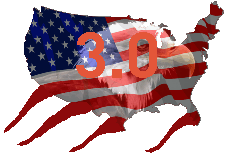
I believe this is the first guest blog post I have ever put on Recruiting Revolution. This was just too good to pass up. One of our recruiting team members (Shine Thomas) sent this to our team today:
What are the rules for workplace hugs? Here are some ideas I have been pondering on:
- The guy / girl hug. A quick hug and 2-3 slaps on the back. Keeps movement going and ensures there is not an awkward too clingy stage. Someone will always get the wrong impression even if it is for a nano-second.
- The two girls who work closely hug – This sort of hug usually starts with a squeal of “HIIIIIIIIIIEEEEEE!!!!!”; big arms, big smiles” maybe some swaying ; some more squealing. Special occasions (such as babies and engagements) can take this hug from 30 seconds to up to 5 minutes and multiple repetitions.
- The sideways half hug - Also good for guy/ girl workplace hugs. Affection is being shown but not too much to give the wrong impression.
- The First hug - When your relationship goes from being friendly hello to hugging it is a very instrumental point in your relationship. It can determine how the relationship will move ahead. If the hug is not equally reciprocated it could lead to bonding issues. However, if the first hug is a good quality hug, immediate life long workplace bonding is sure to follow.
- The outside of work hug - You see someone you know from work and chat to occasionally at random spot out and about in your hometown. Maybe even another city. It’s far enough away from the workplace to warrant extra excitement. You will probably do a “HEEEEYYY (guys) or semi-squealing “HIIIIIIIEEE” (girls); lean in, reach out arms a bit and maybe do a quick hug. Risk takers will go straight into the hug.
- Candidate interview hugs - I have been known to hug my close candidates in the reception area. I must admit I advise against this practice though. I would recommend sticking to a warm extra long handshake and big smile. Some of my candidates have close/ stalkerish relationships with me.
- The new hire hug - There are some candidates you court for a long time. Lots of conversations. Lots of “one more question” phone calls. Lots of trips in for interviews, emails with smiley faces, the excitement of an offer, the acceptance of an offer, relocations and finally they are here at the village. It is really a special day almost like a wedding day. I know on Sunday nights, when I know a new hire is going to start on Monday, I do get nervous excitement! You meet them on day one or sometime during their first week. You walk up to them and say “HIIIIIIEEEEE!!! Welcome aboard!!!’. If you're a female recruiter who has just hired another female recruiter, a hug is critical at this point (unless they are a VP in which case personal discretion should be used). If you have a guy / girl situation a hug might not normally be a good idea. It all depends on if you have developed a good candidate brotherly / sisterly bond.
- The performance review hug - Not much to be said there. If you get a pay rise or promotion a hug is warranted. Or at least a semi hug for two guys. If you didn’t get a good review, a simple “OK then, I have to go now, I have a crazy day working my butt off for you and you don’t even appreciate me and I could be your boss“ look could be OK.
- The termination hug - avoid hugging in termination conversations at all times. It sends a confusing message to the terminated employee. Even if they are crying their eyes out maintain a neutral corporate stance but try and be sympathetic with your eyes so they know you are not an A**. Also, do offer tissues.
- The manager hug - I would follow your manager’s lead and watch their body language. They will definitely be slow moving. If you feel like they are going in for a hug and are OK with this, then hug back immediately. It’s hard for boss people to take that risk so reward them with a lot of enthusiasm. If however, you are not wanting to receive the hug, take 2 steps backwards, cross your arms and smile. They will get the hint.
- The client hug - I find this the most challenging because I really do love my clients and I want to hug them all the time and have to refrain!! (I know I am a freak but I am still in my honeymoon phase). I think when you get to the point of hugging your clients you have become a true trusted advisor. They will listen to anything you have to say because you are at Hugging level. You can get away with anything when you get to this level :Examples below
I’m sorry I don’t have a single qualified candidate – but I can give you a hug!!!
I’m sorry the candidate declined our offer – but let’s hug and cry about it together.
I’m sorry you cannot replacement hire the 5 people who have left your 7 person team
Your team hates your management style, you should really hug them more often
















